Most travelers to New Mexico set their sights on Santa Fe, Taos, or Albuquerque, destinations that each merit a visit. But the state’s less-traveled southern region has a fascinating vibe and culture all its own. Las Cruces is a friendly city along the Rio Grande just north of Mexico, next to russet-hued mountains that offer excellent opportunities for hiking and exploration. Add in savory cuisine spiced with green chilis and washed down with local wines, a fascinating history, and some unexpected cultural offerings, and Las Cruces is worth getting to know better. Here’s how to visit.

Red Mountains, Blue Skies, and Green Chiles in Las Cruces, New Mexico
Take a detour to a quirky town
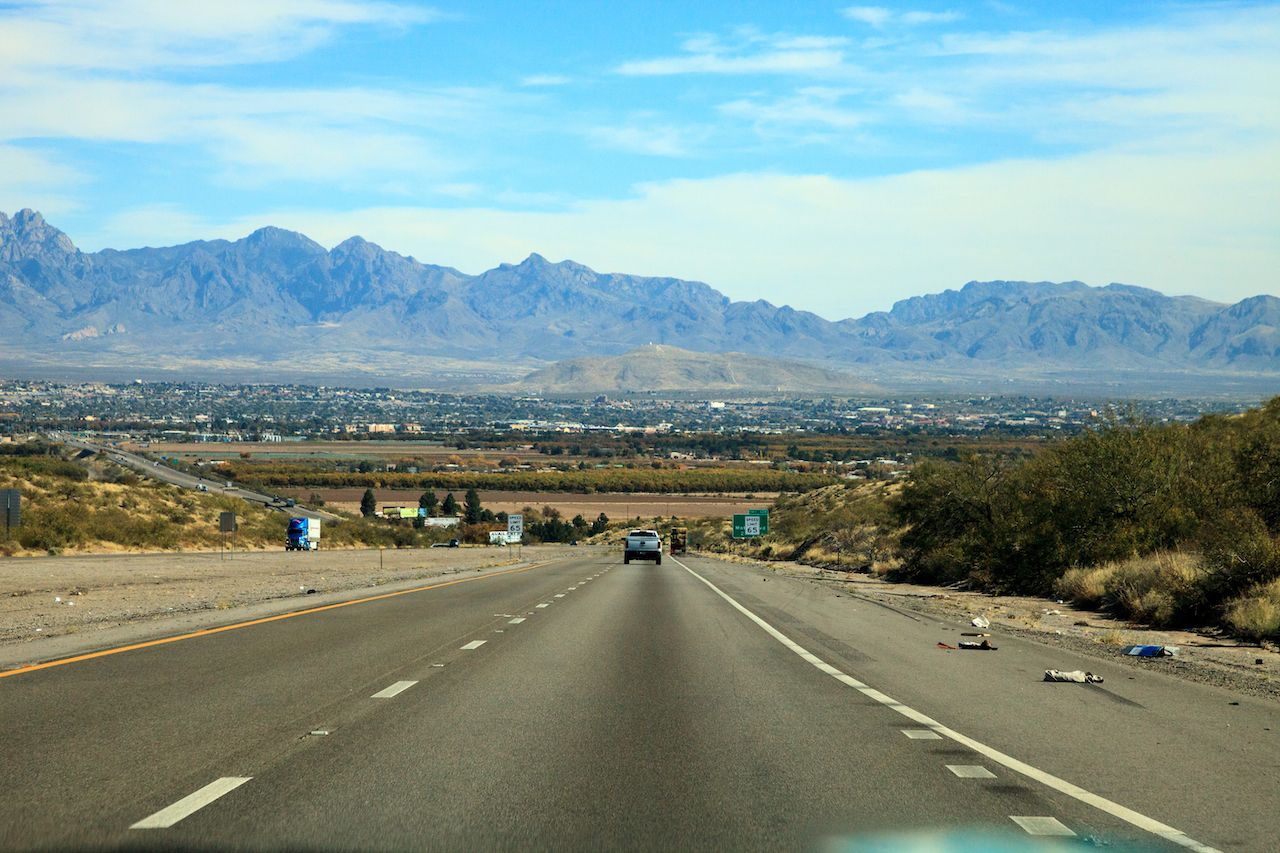
Photo: SunflowerMomma/Shutterstock
You can fly into Albuquerque and hop on I-25 South for the three-hour drive to Las Cruces. An hour before you reach Las Cruces, turn off the I-25 to swing through Truth or Consequences, a tiny town just west of Rock Canyon and Elephant Butte State Park. Originally named Hot Springs for its abundant geothermal springs, the town voted to change its name after the popular NBC radio show Truth or Consequences promised publicity and aired a promotional broadcast here in 1950. Today the town’s roughly 6,000 locals affectionately call their home “T or C” and still welcome visitors who come for the thermal springs and their therapeutic qualities.
Peruse local crafts and produce
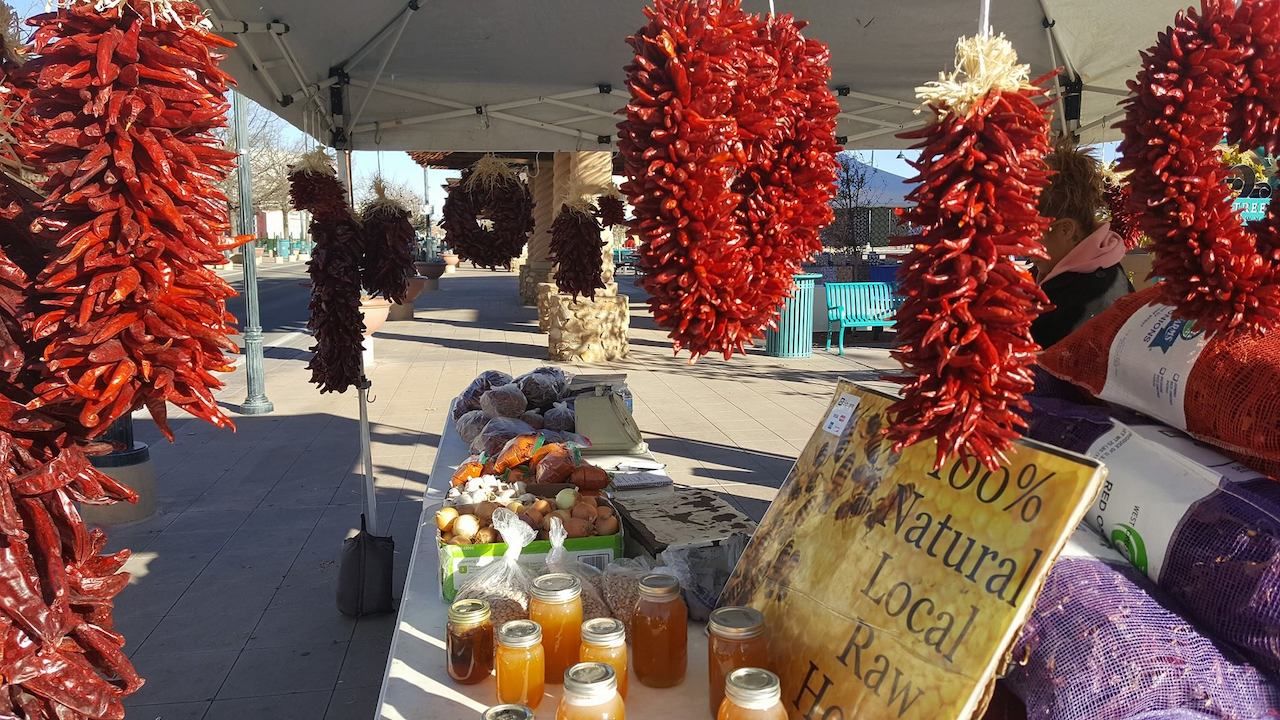
Photo: Farmers & Crafts Market of Las Cruces/Facebook
If you’re in Las Cruces on a Wednesday or Saturday morning, visit the Farmers & Crafts Market of Las Cruces, which has been a tradition here for nearly 50 years. Craft and food vendors set up on the Plaza de Las Cruces for the smaller Wednesday market. And on Saturday, seven blocks of Main Street shut down for more than 300 vendors. Handmade, locally crafted goods include jewelry, tooled leather, ceramics, clothing, and furniture. Farmers sell their produce, green chili, local honey, and desert plants. You can sample baked goods and homemade kombucha for breakfast or fill up on New Mexican specialties around noon. Live music adds to the festive atmosphere.
Hike in the ochre hills
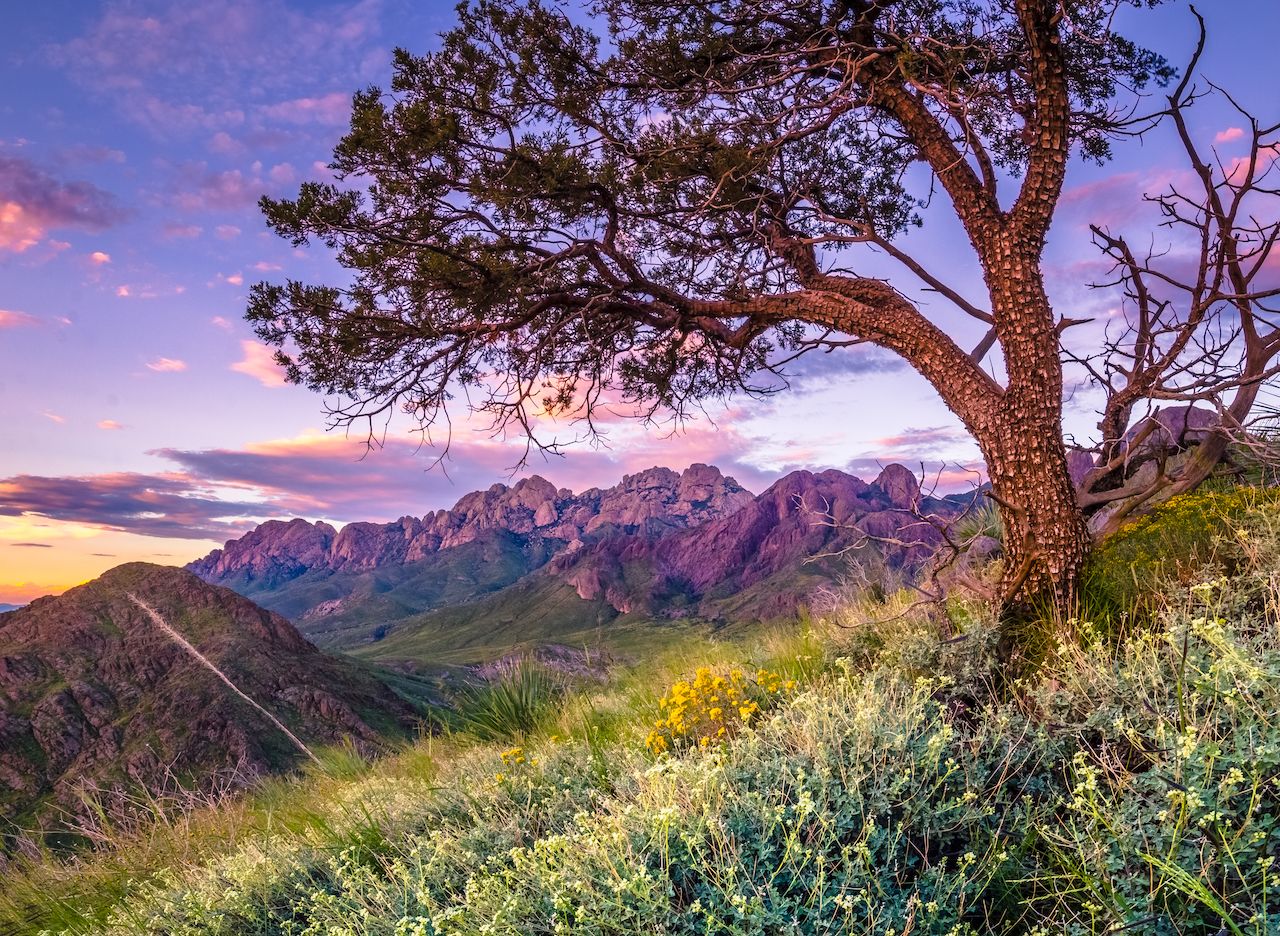
Photo: Richter MachThunder/Shutterstock
Hiking here is accessible year-round. In the Organ Mountains 10 miles east of Las Cruces, Dripping Springs Natural Area offers four trails. From the visitor center, the moderate 1.5-mile Dripping Springs Trail climbs to the ruins of the 1870s Dripping Springs Resort that hosted famous guests, such as Pancho Villa, and boasted a concert hall in the wilderness. Along the trail in different parts of the canyon, you can also explore remnants of a livery and sanatorium.
Nearby, the easy Soledad Canyon loop takes you to a waterfall that flows in the spring rainy season, dries to a trickle in the summer, and often forms a frozen cascade in winter. Located three miles east of New Mexico State University, two trails circle Tortugas “A” Mountain, and one leads to the top with 360-degree views.
Savor cuisine spiced with local chilis
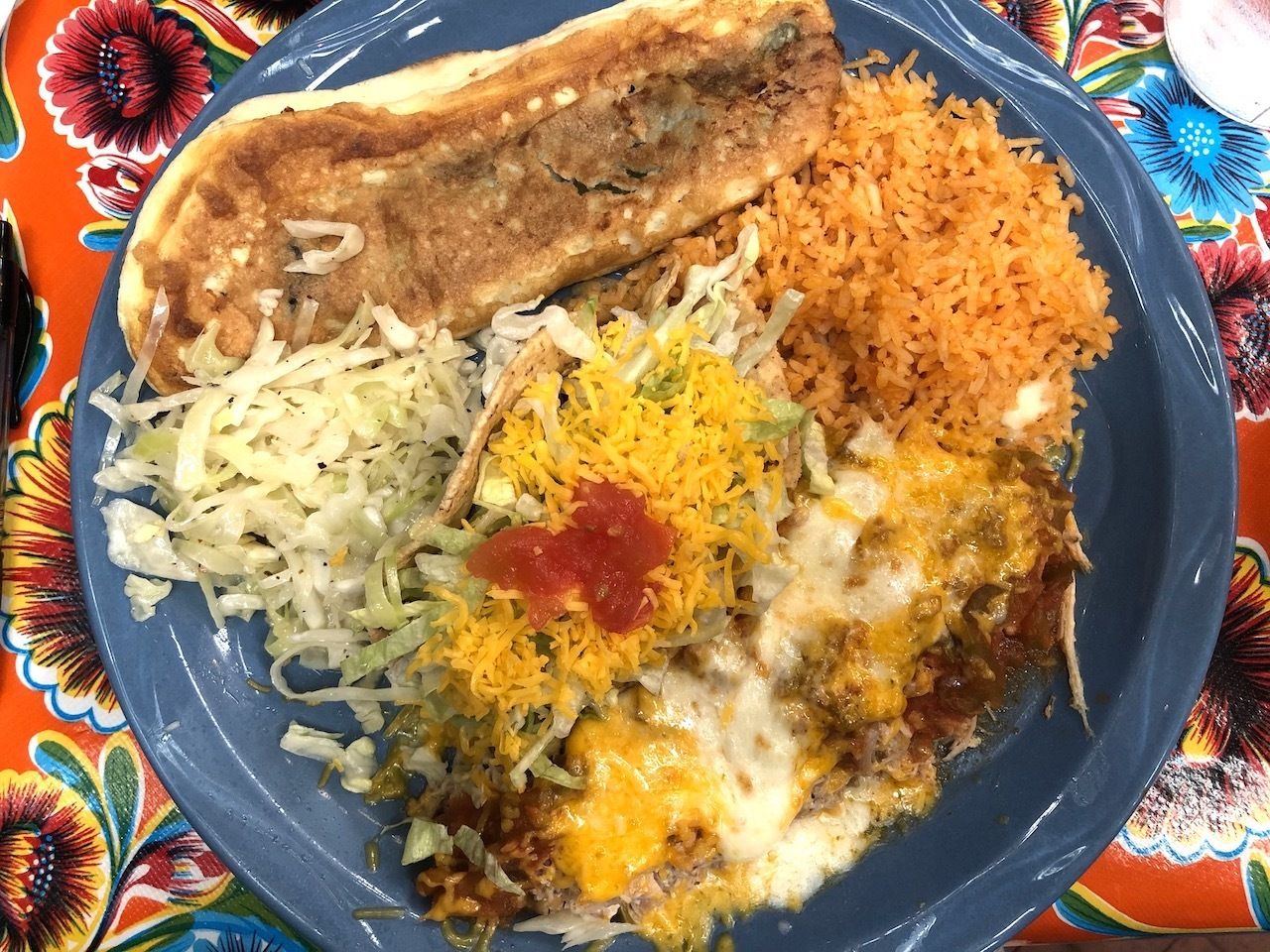
Photo: Elizabeth Hey
If you’re looking to sample New Mexican cuisine, you can eat your way through local hangouts for at least a month. On the colorful patio at Andele’s Dog House, where dogs do get special treatment, specialties include tacos al carbon with salsa bar toppings ranging from mild to smokin’ hot. Cozy, family-owned La Nueva Casita Café lies within the Historic Mesquite District, the original town site of modern-day Las Cruces. Serving up solid Mexican fare and a kitschy vibe, La Posta de Mesilla resides within an iconic 18th-century stagecoach station that features a piranha tank and aviary.
For a drink, grab a margarita at the Imperial Room at Double Eagle, which also serves up New Mexican steaks under a hammered-gold ceiling in a restored, and some say haunted, 1849 mansion. At DH Lescombes Winery & Bistro you can sample locally produced wines, which pair well with the comfort-food menu. In a region famous for its Hatch Valley chilies, a tour of its restaurants may well end up at the walk-up window at Caliche’s Frozen Custard for its sweet-spicy green chili sundae.
Take in the historic art
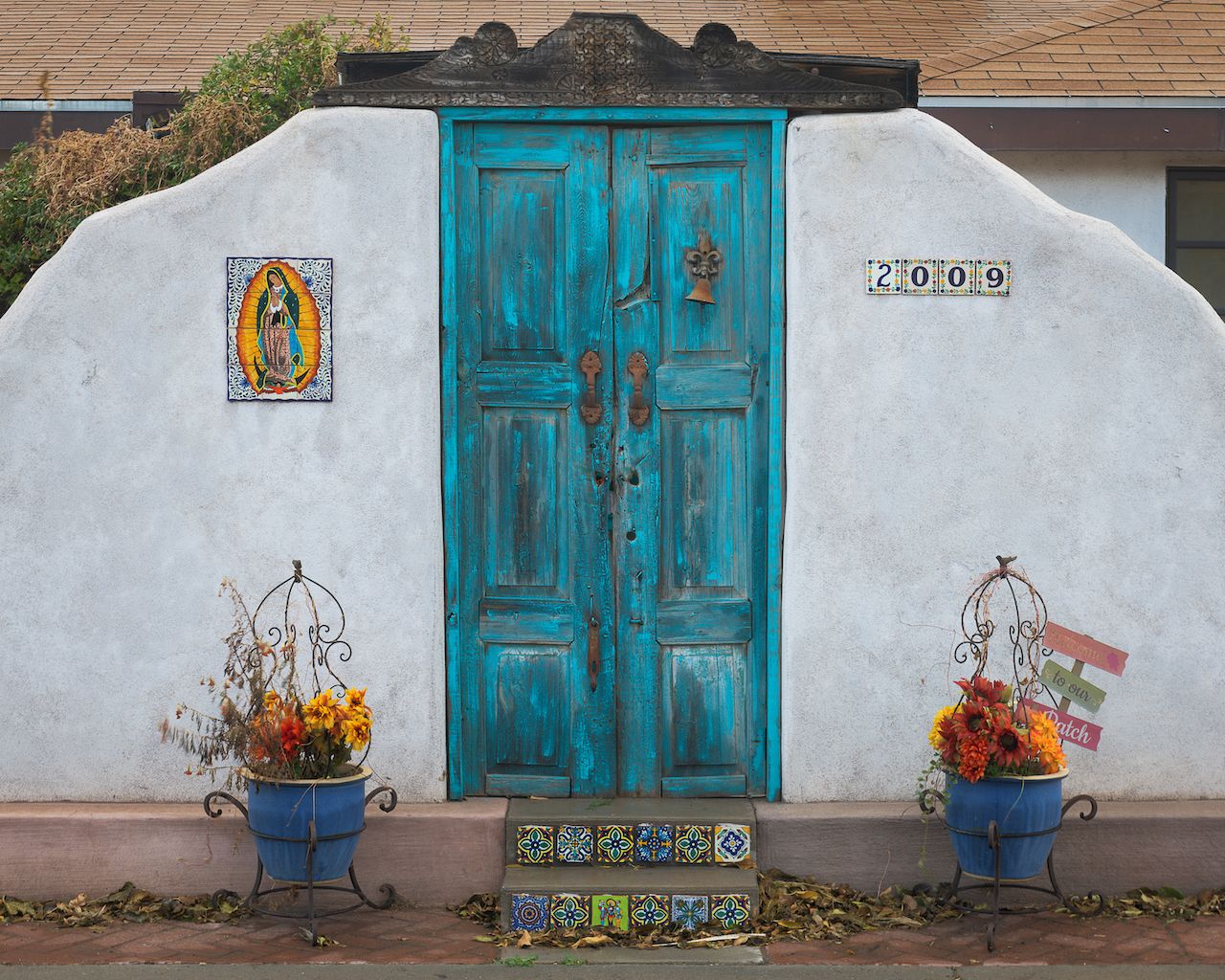
Photo: Nagel Photography/Shutterstock
Central to New Mexico’s history, the historic town of Mesilla lies 10 minutes from downtown Las Cruces. In 1850, shortly after the end of the Mexican-American war, Mexican citizens settled into what they called La Mesilla on the Mexican side of the border. Just a few years later, that border moved 40 miles south. In the 1854 Gadsden Purchase — referred to as Venta de La Mesilla or “the Sale of the Mesilla” — the US paid Mexico $10 million for 29,670 square miles that are now part of present-day Arizona and New Mexico. The town’s traditional Mexican plaza is surrounded by historic buildings that house shops and galleries, and the bells of the 1855 Basilica of San Albino have been rung by the same family since the 1870s. The Taylor-Mesilla Historic Property shows traditional and adobe architectural styles and Spanish colonial, Mexican, and New Mexican art.
Beyond the art in Mesilla, you can view more at New Mexico State University. The school’s contemporary gallery houses one of the world’s largest collections of Mexican retablos, which are colorful oil paintings on tin. At NMSU’s alumni and visitors center, the curated Zuhl Geological Collection displays petrified wood, minerals, fossils, and geological artifacts. For classic films, theater, or live music, downtown’s Rio Grande Theatre, built in 1926 and on the National Historic Register, is the nation’s only remaining two-story adobe theater. And on first Fridays, you can pop into galleries between Main and Mesquite during the “Downtown Ramble.”
Marvel at bright white dunes
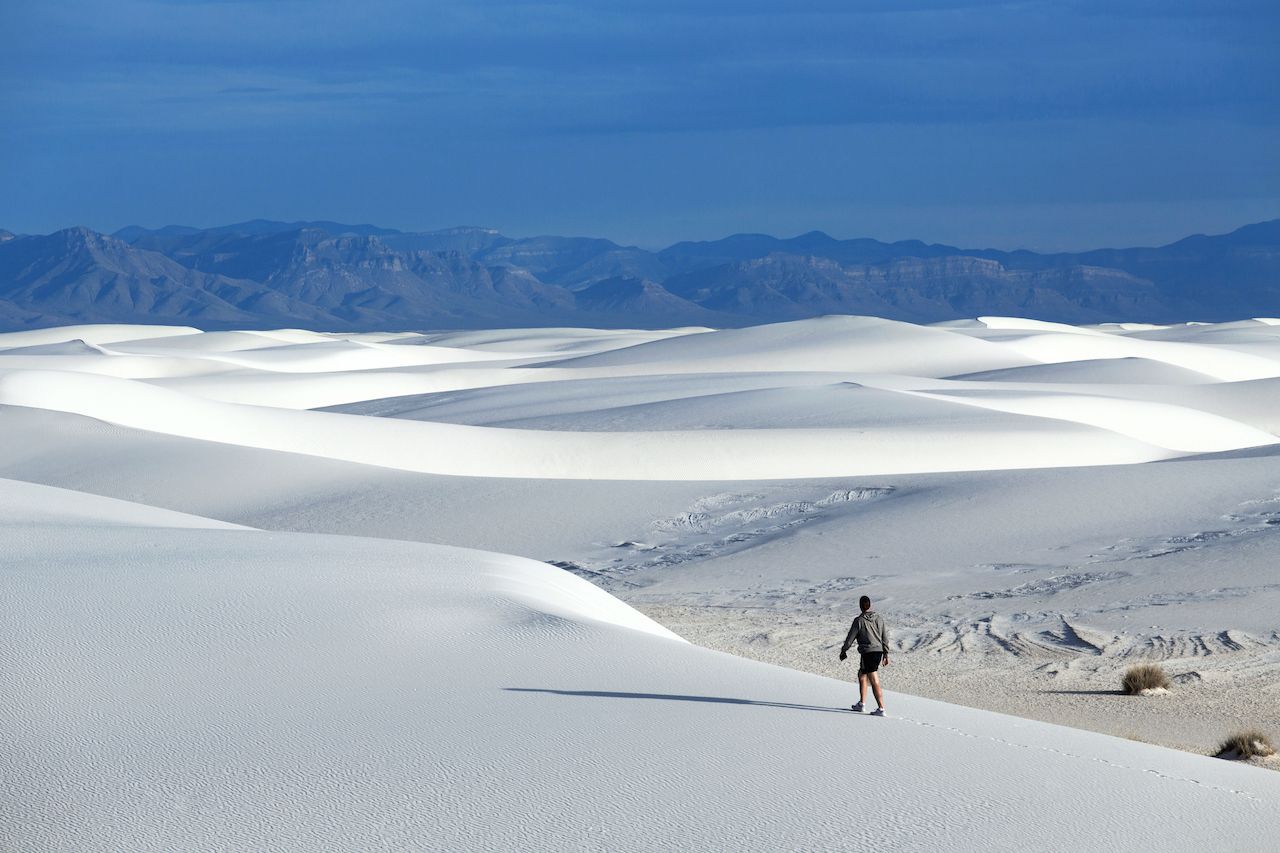
Photo: sunsinger/Shutterstock
White Sands National Monument, the nation’s newest national park, lies about 45 miles east of Las Cruces. At 275 square miles, the world’s largest gypsum dune field can be seen from space. At the visitor center, rent a saucer to slide down the dunes or, better yet, bring your own. It’s also a great place to bring your dog.
Winding eight-mile Dunes Drive leads you through this whitewashed panorama, and numerous turnouts invite exploration. Near the apex of the drive, the five-mile Alkali Flat Trail is well worth the two or three hours, depending on your stamina, as you hike up and down the massive dunes with red markers to keep you oriented.
Gypsum doesn’t absorb heat from the sun, which makes the sand cool and comfortable to walk on, even in summer — but be sure to take plenty of water as there’s no water available beyond the visitor center. Just note that because White Sands Missile Range surrounds the dunes, the monument closes during missile testing. Closures can average twice weekly for one or two hours.
Munch on pistachios
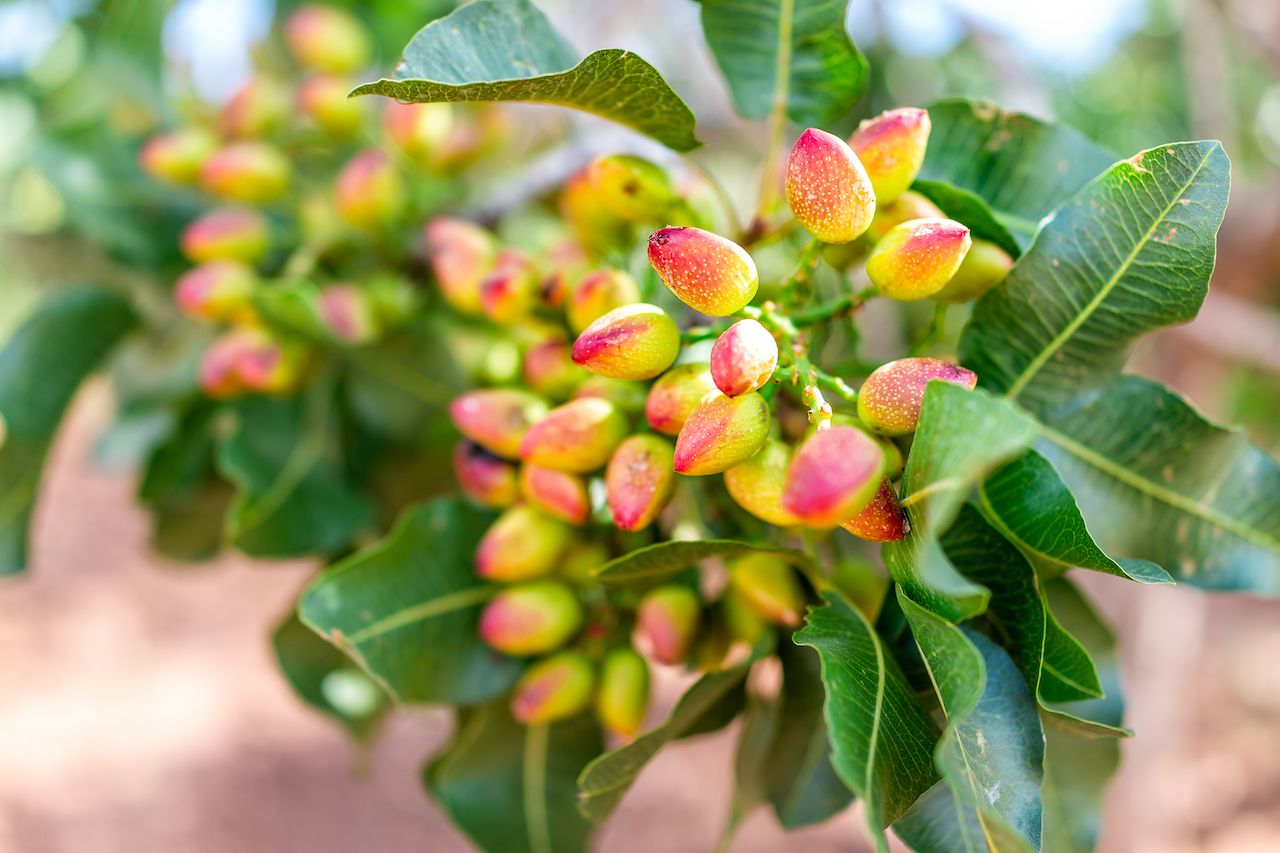
Photo: Kristi Blokhin/Shutterstock
Only a few places in the world have the conditions to grow pistachios, and Alamogordo is on that short list. After a visit to White Sands, head about 30 minutes further east to Eagle Ranch and check out one of the healthiest nuts on the planet. The store offers complimentary samples of its pistachio chocolates and wine from the acreage’s seven grape varieties. Free tours offer a glimpse of the growing, harvesting, and roasting process. Overlooking the pistachio grove, cozy patio sofas invite you to sip a glass of wine or enjoy creamy pistachio ice cream before heading back to Las Cruces.